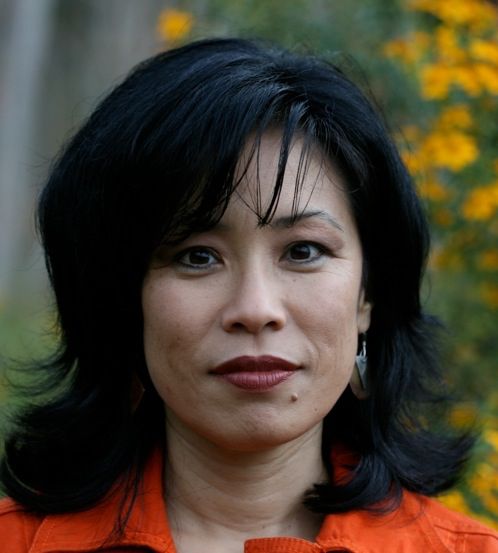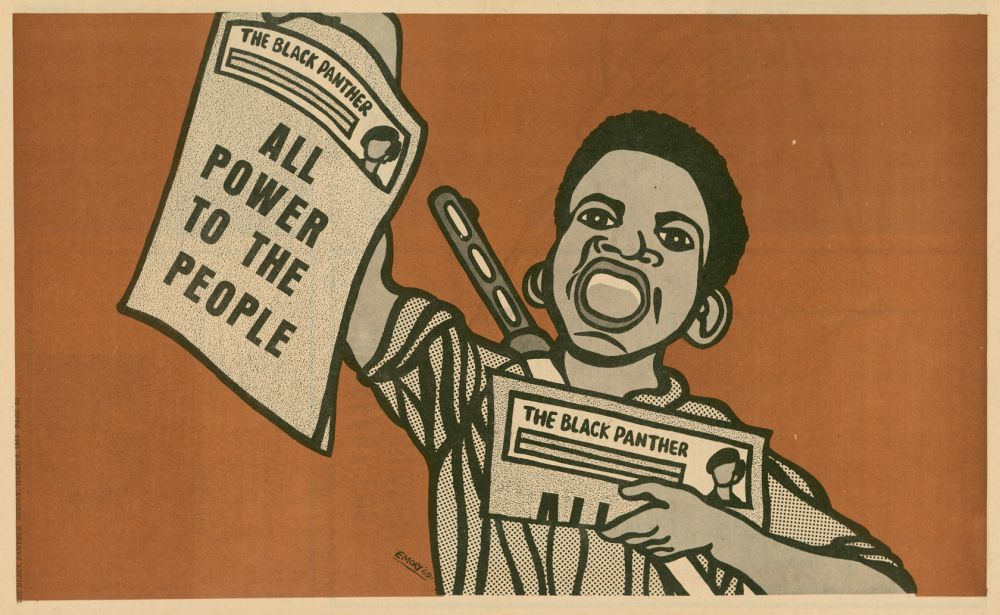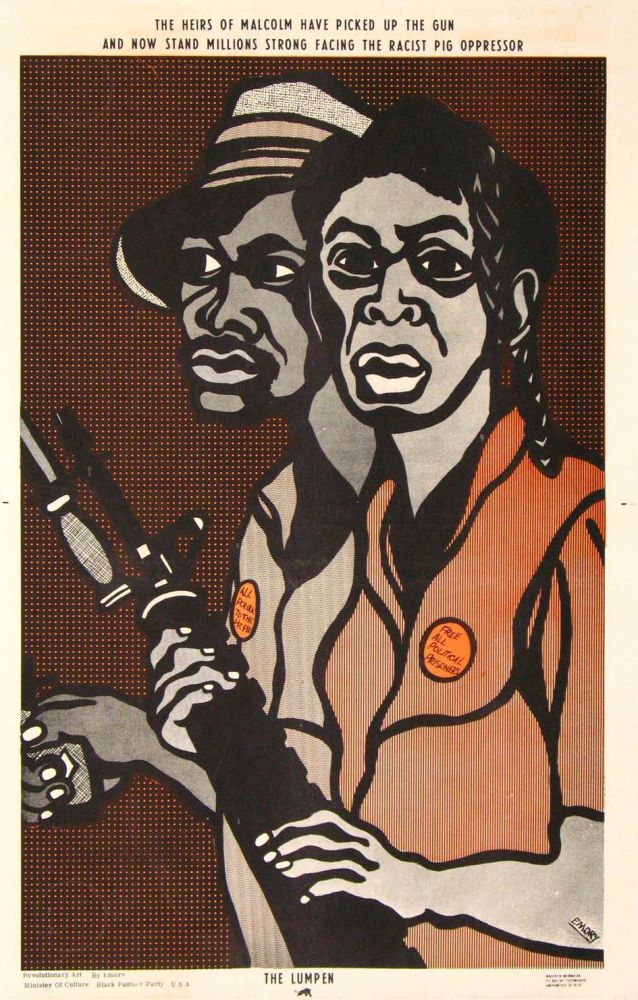The Art of a Movement

As Minister of Culture for the Black Panther Party, Emory Douglas created bold, provocative art that spoke for revolution and the empowerment of African Americans. Fifty years later his art has lost none of its power or relevance.
On Monday, Nov. 14, the UC Santa Barbara Center for Black Studies Research (CBSR) will host Douglas and fellow Black Panther artist Akinsanya Kambon in “50 Years of the Black Panther Party: Revolutionary Art and the Black Radical Tradition.”
First, Douglas and Kambon — a painter, sculpture and author of the “Black Panther Party Coloring Book — will be in conversation with UCSB scholars Diane Fujino, the center’s director, and Felice Blake, an assistant professor of English, in the campus’s MultiCultural Center (MCC) Theater from 6 to 8 p.m. That discussion, the Clyde Woods Memorial Lecture, will be followed by a reception in the MCC Lounge for the corresponding exhibit of Douglas and Kambon’s work, which will be on display through the end of the fall quarter. Both events are free and open to the public.
Fujino, who organized the event with Blake, said the work of both artists is still relevant today. “We want to wrestle seriously with the meaning and significant history of the Black Panthers and of Black Power at this moment, 50 years later, and to think very seriously about what it means and how it shapes our thinking and our social justice practices today,” she said. “This program builds on the center’s work to examine the work of art and the public humanities in shaping social consciousness, inspiring creativity and demanding critical thinking.”
Founded in October 1966 by Huey Newton and Bobby Seale, the Black Panther Party became the most influential Black Power organization to emerge from the Civil Rights era. Known initially for its armed patrols to protect African Americans from the police, the Panthers morphed into an important social justice movement that provided food and health care services to underserved communities.
“There’s a lot to study there, and I think people are really trying to understand their significance and who they really were,” said Fujino, who is also a professor of Asian American studies at UCSB and author of a book on a Japanese American leader of the Black Panther Party, “Samurai Among Panthers: Richard Aoki on Race, Resistance and a Paradoxical Life” (University of Minnesota Press). “At the same time, some Panthers are recreating their image in ways that they want to be seen today. We need to understand and analyze history, in all its good and bad, so we may learn from the past to build the kinds of social justice movements we need today.”
Douglas, Fujino noted, is still active in social justice work around the world. Kambon, who trained as a fine artist, focuses on African themes in his work. “We’re really fortunate to be hosting these two distinguished Panther artists within a month of the 50th anniversary of the birth of the Black Panther Party,” Fujino said.
The Black Panthers’s 50th anniversary comes as the nation continues to struggle with its troubled racial history and the rise of the Black Lives Matter movement, the goals of which Fujino likened to those of the Panthers. “I think Black Lives Matter is very much influenced by the Panthers, and the whole Black Power movement,” she noted. “They’re raising ideas of what we want and a vision for society that’s beyond what many people can even dream about. They’re expanding our imaginations and they’re expanding our dreams of freedom.”
It’s what the Panthers were doing in the 1960s and ’70s. The survivors are gray today, but their contributions are still fresh and important, Fujino said. “It wasn’t just a group that was trying to feed people,” she noted. “They were saying we need to feed our youth if they’re going to be able to study in school and focus, so that was part of it. But they were also raising ideological questions and critiquing the government: How come the government does so little with so much when we do so much with so little? As Huey Newton said, these are survival programs in service of liberation.”
The CBSR will host an intergenerational activist dialogue Sunday, Nov. 13, from 11 a.m. to 1 p.m. at La Casa de la Raza, 601 E. Montecito St. in Santa Barbara. For more information, see https://cbsr.ucsb.edu/.







